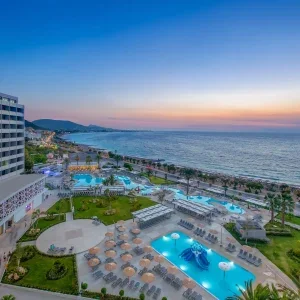As of 11 April 2022, the UK showed a running 28-day occupancy that was 87% of the comparable 2019 level, and the country’s index has consistently been above 80 since 23 February. Poland (84.5) and Ireland (81.3) realised the next-highest occupancy indexes, but despite having the second-highest occupancy index, Poland’s levels have fallen over recent weeks after hitting an index peak of 94 on 29 March 2022. As noted in an earlier analysis from STR, Poland experienced a lift in occupancy as a result of hosting refugees during the early days of the Russia-Ukraine war.
“Europe’s occupancy recovery has accelerated in recent months to 70% of pre-pandemic comparables,” says Robin Rossmann, STR’s managing director. “In general, leisure-dependent markets have been furthest ahead in the timeline, but there are encouraging signs recently of life returning to gateway cities that are more reliant on corporate demand. Our occupancy-on-the- books data shows that many of the major markets should recover to 90–100% of 2019 levels by mid-May.”
London’s pandemic recovery
According to preliminary April 2022 data from STR, the London hotel industry reported its highest monthly occupancy level since February 2020 with a rate of 72%, an average daily rate (ADR) of £151.42, and a RevPAR of £108.98. While occupancy increased month over month, it was down roughly 11% from the pre-pandemic comparables. The absolute ADR level was slightly lower than the previous month but up more than 6% from April 2019.
London’s daily occupancy stayed above 60%, with the exception of Monday, 18 April (50.2%). The highest occupancy level was reported on Tuesday 26 April (83.7%), and overall improvement in weekday levels points to a return of corporate demand.
US rise, Chinese fall
Outside of Europe, the US hotel industry continued to gain steam with occupancy rising to 66.6% during the week of 24–30 April 2022. That absolute occupancy was the second highest of the year thus far, and it was the third time above 66% this year. For comparison, occupancy only surpassed 66% seven times in 2021, all of which came during the summer.
Weekday (Monday-Wednesday) occupancy (64.8%) also reached the highest point of the year and the highest level since last summer. In China, however, its occupancy rate has dropped due to its stringent Covid-19 policies but has shown some recovery, up 1.2 percentage points – although that was prior to the announcement that Beijing was going into lockdown.
21%
The percentage of travellers that have not booked or taken a trip due to Covid-19 by May 2022 compared with 68% in February 2021.
3.4
The number, on a scale of one to five, of those asked who said that Covid-19 influenced their decision not to book a trip, compared with 4.6 in 2021.
STR Global






